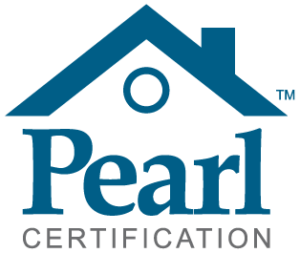Data Driven Market Transformation: Or How to Score Cheap Concert Tickets
Milton Matter
December 13, 2018
When my fifteen-year-old son returned with a concert ticket in one hand and cash in the other, that’s when I knew he would probably be ok in this world. He had decided last minute to tag along to go see Jason Isbell in concert. He didn’t have a ticket, but we knew the show wasn’t sold out. But we also knew that being a teenager without a job, he didn’t have the $50 it would take to buy a ticket. So while the rest of us went to get dinner near the venue, he took off with $30 – mine, naturally – in hopes of finding a bargain. When he came back with not one but two tickets he bought for $20, I thought “Yeah, he’s probably going to do ok in life."
What took place that night was a market transaction, influenced by a couple of timely pieces of information: that tickets were not sold out, and that they were priced at $50. From these my son was able to form and test the hypothesis that if anyone had extra tickets, these would be valued at less than full price. The lessons here are larger than simply how to buy a cheap concert ticket: good information, moving quickly, and distributed widely, has the potential to make enormous impact.
In the growing effort to more effectively distribute information about our nation’s housing stock – for reasons of accurate valuation, energy reduction, risk management, and more – Home Performance XML (HPXML) is already shaping the evolution of the marketplace. Comprised of a data dictionary and a standard data transfer protocol, HPXML allows different software systems to communicate quickly and effectively. Pearl Certification is part of the working group that is leading the development of HPXML for the residential energy efficiency industry.

Our aim at Pearl is to collect accurate data about the performance-related components of a home and make these more visible at time of sale and at other key points in the life cycle of home ownership. At the time of sale, this data informs potential buyers about the home's comfort and efficiency features, while giving agents and appraisers a sense of the features' value. At other times such as equipment breakdown or planned renovations, the information in a Pearl certification serves to assure homeowners that they have made a quality upgrade, giving them peace of mind that the dollars spent are an investment rather than a sunk cost.
Not surprisingly, these markets are hungry for data that can help them make better decisions about high-stakes transactions. Consider the results of an independent study by leading appraisers investigating the effect of a Pearl certification on home sale price: "The Pearl Home Certification Premium study found an average (mean) premium of 5% in the market area where Pearl has established a presence and where agents are marketing the certification effectively.”
It’s not only in real estate transactions that homeowners are valuing better data. In a survey of homeowners receiving a Pearl certification in conjunction with a repair or upgrade, 7 out of 8 said they were influenced to work with a Pearl Advantage Contractor because of the value Pearl Certification brings. Data that is timely, transparent, and accessible is becoming actionable information, and that information is affecting markets.
But where does all this data come from? Let’s stick with our contractor example for a moment. Pearl partners most often with contractors who perform upgrades to the building shell, heating and cooling, or renewable energy features of a home. When considering a partnership, Pearl looks first for quality work based on the latest science and standards. A contractor must also have excellent customer service reviews, along with strong track record of collecting and storing job data. Pearl then provides on-site training about how to collect the needed data and photos, and how to enter these into the Pearl system and request a certification.
The resulting certification is valued by both homeowner and contractor. The homeowner loves that the work done to the home is presented in an intelligible and attractive format, and that the certification includes appraisal documents detailing the recent install (and perhaps other high performing features). The contractor likes that the certification showcases the quality work they have done. Contractors then use sample certifications to highlight the higher standard of their work, differentiating themselves from the competition and securing more jobs. When the contractor who does conscientious, sustainable work wins the job, we all win, including the planet.

Like the rest of us though, good contracting companies are busy. They are working hard to streamline everything from inventory levels to travel times. If Pearl can help them spend less time entering data, then so much the better. We realized that quite a few of our partners, for reasons of participation in various utility programs, were entering considerable amounts of home data into other software. Much of what is needed for a Pearl certification was already being keyed in. Since most of these applications can export HPXML, we recognized an opportunity to give some time back to a contractor’s busy schedule. Building HPXML functionality into Pearl has allowed users to upload a file, add a few photos, and be on their way.
Yet the easy export and import of HPXML files can also be a double-edged sword. If errors committed when entering home data are not identified before being transferred to Pearl, HPXML files can easily transfer inaccurate data. For instance, we noticed that in quite a few homes submitted by one contractor, the HPXML detailed that 3” thick fiberglass batts had been installed in a floor cavity over a vented crawlspace, with no other insulation. Since we know them to be a great contractor, and since 3” of fiberglass would be quite insufficient in their climate, we reached out. They were surprised to hear that the HPXML listed fiberglass batts, since what they had actually installed in all of these floors was 3” of closed cell foam. That’s quite a difference.
In this case a user had entered incorrect data into software used to comply with a utility program. The problem was then multiplied by a feature meant to help contractors save time, namely the ability to set defaults. The user had entered the insulation type as fiberglass then saved this as a default so it would populate automatically for all future homes of this type. In this fashion the error had been inadvertently propagated to many homes, then exported as HPXML for consumption by the utility program and Pearl.
Of course this type of error is not the result of any inherent deficiency in HPXML. The files accurately captured and transferred the information provided by the user. But this is certainly a warning sign: when data sets are easy to transfer, they easily transfer both accurate and inaccurate data. And if compromised data forms the basis of subsequent analysis and action, then bad decisions compound like a game of telephone.
Yet HPXML can also be the means by which data is cleaned, filtered, and confirmed. To this end Pearl compares a contractor’s HPXML file against other types of data we receive, including images, documents, and directly-keyed data. By viewing a home through these multiple lenses, we are learning to spot – and even predict – when each data type may contain user-generated errors. As we identify points of weakness in the chain, we work with our partners to institute practices which encourage accuracy right from the start.
Pearl is also looking toward new methods to query our data sets – to test a hypothesis, and more easily turn it into information. Even now we are starting to experiment with artificial intelligence in the hope that it may help find patterns, sort data quicker, and raise new questions. It’s our belief at Pearl that within the current proliferation of housing data lie insights that will yield sizable reductions in energy use. Those insights will be impossible without the building blocks offered by HPXML. We will need information that is easily shared and has an agreed upon meaning – the same things my son needed when buying concert tickets. And remember how he bought two tickets for $20? He sold the extra one a few minutes later for $20. That’s when I realized he wouldn’t be living in my basement after college.
Milton Matter is Vice President of Research and Development at Pearl Certification. In between concerts he spends his time at Pearl, tinkering with the certification system, building new and custom products, and maintaining customer and partner relationships.
